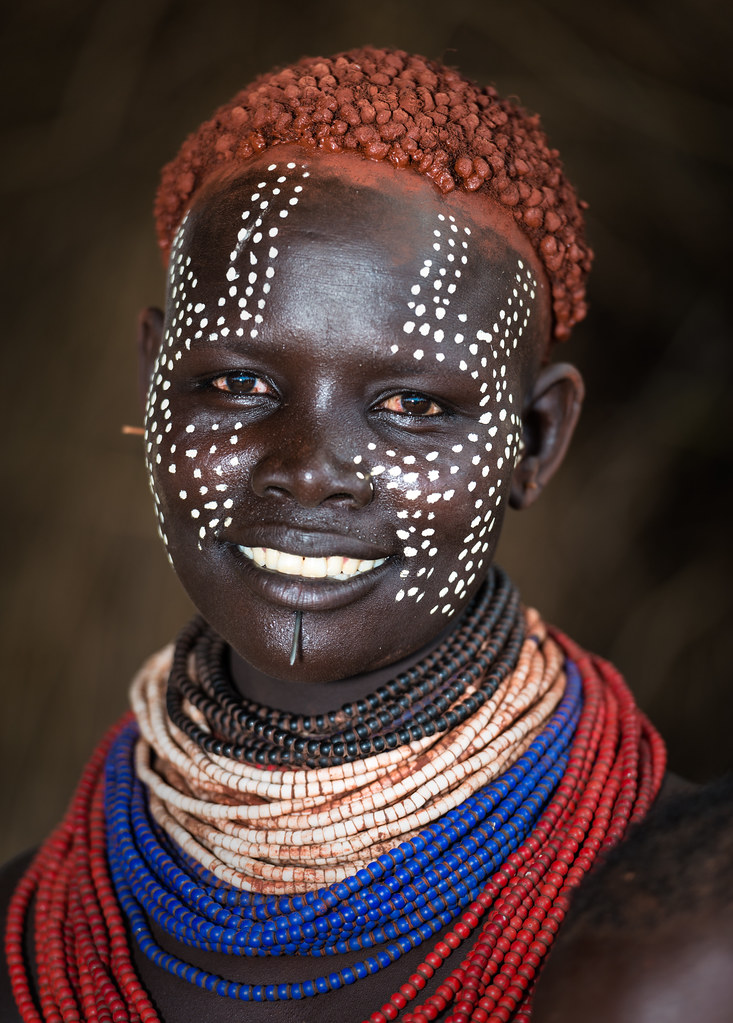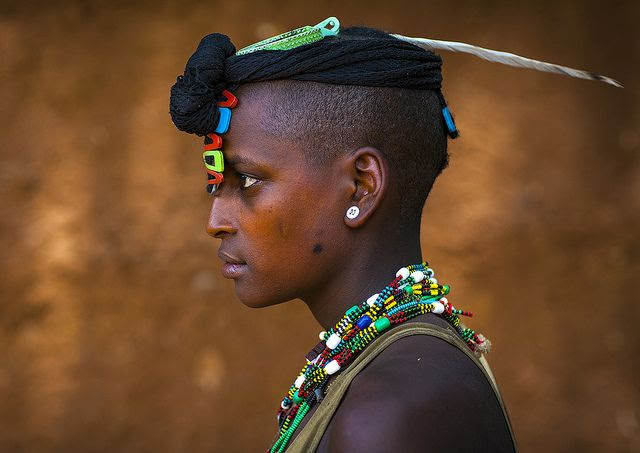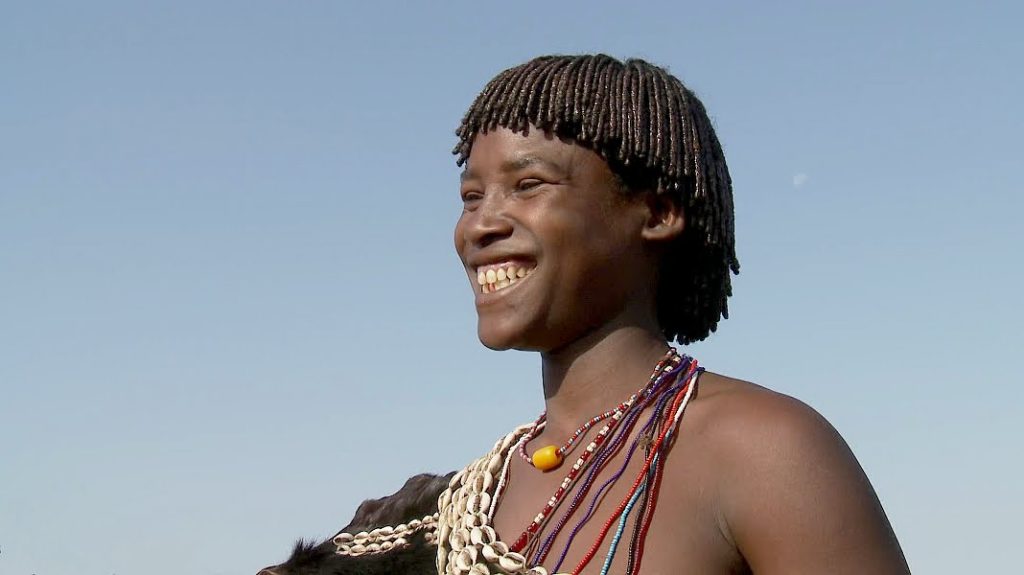
Hamar Tribe
The Hamar people live in the arid, remote hills of the Omo Valley and are one of the most visually striking tribes due to their elaborate body decorations and hairstyles. Hamar women style their hair with a mixture of red ochre, butter, and fat, forming thick, twisted locks known as “goscha.” They adorn themselves with beads, cowrie shells, and metal jewelry, signifying their social status and beauty.A defining ceremony in Hamar culture is the Ukuli Bula, or bull-jumping ritual. This is a coming-of-age event where a young man must jump over a line of castrated bulls, naked, in front of the entire village. If successful, he proves his readiness to become a man and marry.
Mursi Tribe
The Mursi are perhaps the most iconic tribe of the Omo Valley, known worldwide for the clay lip plates worn by women. The custom begins when a girl reaches puberty; her lower lip is cut and slowly stretched over time using larger and larger plates. Though not all Mursi women practice this today, it remains a powerful symbol of cultural pride, identity, and beauty.
Beyond the lip plates, the Mursi also engage in body scarification, intricate face and body painting, and live in simple huts in the Mago National Park. They are semi-nomadic pastoralists who rely on cattle for survival and status. One elder explained, “The lip plate is not for tourists — it is for our ancestors and our daughters. It is a conversation with time.” Despite increasing external pressures, the Mursi continue to protect their way of life fiercely.


Karo Tribe
Perched along the banks of the Omo River, the Karo are artists of the body. They are relatively small in number but mighty in cultural expression. The Karo people are experts in body painting, using natural materials like chalk (white), charcoal (black), ochre (red), and crushed stone (yellow) to create complex designs on their skin for ceremonies and daily life.
The Karo men often adorn themselves with feathers, beads, and clay hair buns, while women wear metal bangles and animal skins. During rituals, you’ll see scenes of symbolic storytelling painted directly on their bodies — from animals and stars to ancestral spirits. One young man told us, “Each mark is a memory. We paint our bodies the way others write history.” The river sustains their livelihood, and the beauty of their expressions reflects the harmony they seek with nature.
Dassanech Tribe
The Dassanech inhabit the harsh environment near Lake Turkana, where survival demands adaptability. They are semi-nomadic agro-pastoralists, depending on the Omo River and its seasonal floods. In contrast to other tribes that emphasize elaborate ornamentation, Dassanech style is more practical but no less unique.
They are known for recycling modern materials into adornments — bottle caps become skirts, wires turn into jewelry, and scrap metal is turned into tools. This resourcefulness speaks volumes about their resilience. Their women, often seen with intricate braids and layered necklaces, carry out much of the labor and decision-making. Despite their remote location and challenging climate, the Dassanech maintain a proud cultural identity. “We don’t have gold,” one elder told us, “but we wear the strength of survival.”


Banna Tribe
Closely related to the Hamar, the Banna people are friendly, communal, and known for their vibrant markets, where they trade cattle, honey, grain, and crafts. Their attire includes animal skins, bead necklaces, and sometimes flower crowns. The Banna often serve as traders and mediators between other tribes in the region.
Music, dance, and celebration are central to their way of life. During village festivals, the Banna people come together in joyous display, singing songs of heritage and dancing in rhythmic circles. “Our market is our heartbeat,” a Banna merchant told us. “It is where we laugh, trade, marry, and forgive.
Tsemay Tribe
The Tsemay live in the Woito Valley, not far from Jinka. They are agro-pastoralists who herd cattle and grow crops like sorghum and maize. Their dress includes leather garments adorned with beads and cowrie shells, and both men and women wear distinctive hairstyles.
The Tsemay are great storytellers. Around evening fires, elders share fables, history, and life lessons in poetic form. One memorable tale spoke of a boy who followed the call of a singing bird into the forest, only to find a hidden spring that saved his village from drought. Their oral traditions keep their ancestral wisdom alive and vibrant.


